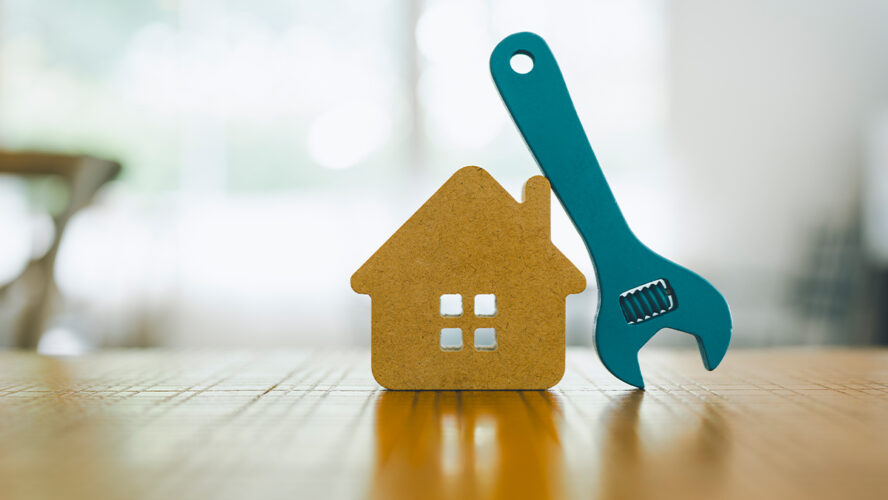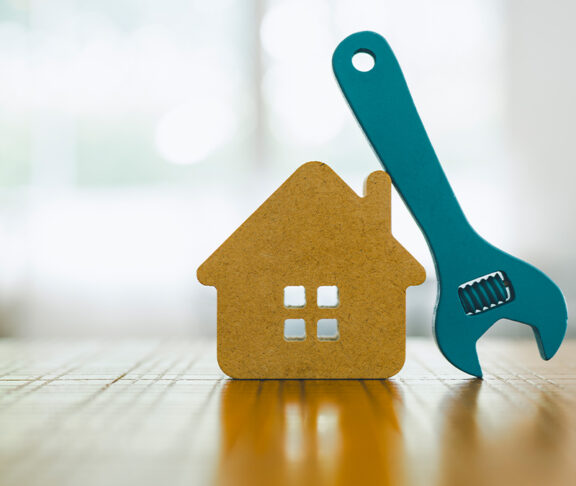Michele hadn’t realized just how much her house had deteriorated over time. Like many retirees, she was living on a fixed income. Then a serious health issue drained her savings, leaving her with repairs she couldn’t afford and a home that was becoming increasingly unsafe. A leaky roof, deteriorating ceiling, and other hazards made daily life difficult – and nearly forced her to sell the home she hoped to pass on to her daughter.

Maureen Carlson
President and CEO, Rebuilding Together
Through Rebuilding Together, a national nonprofit that provides no-cost home repairs for those in need, Michele’s roof and side sewer were fixed, the kitchen ceiling was replaced, appliances and fixtures were updated, and safety modifications were installed throughout the home.
Stories like Michele’s are not unusual.
In today’s housing market, high mortgage rates and rising costs are keeping residents in the homes they already own. But as these homes age, the health hazards inside them grow. Issues like uneven flooring, poor ventilation, and outdated plumbing can lead to falls and respiratory problems. When repairs are too expensive or delayed, these conditions can quietly erode health and quality of life over time. Rebuilding Together sees these realities firsthand every day.
To better understand the impact of their work, the organization conducted a multi-year study of its home repair programs. The findings confirm that improved housing conditions have a measurable effect not only on our physical safety, but also on our emotional and mental well-being.
What the data shows
The results were compelling. After repairs were completed:
- 84% of residents reported feeling safer in their homes.
- 72% experienced a better overall quality of life.
- 71% saw improvements in mental health.
The repairs themselves varied – from replacing roofing and HVAC systems to fixing broken stairs and installing grab bars. But the outcomes were universal: each repair directly contributed to a resident’s ability to remain in their home with greater stability, comfort, and peace of mind.
Among those who have received repairs from Rebuilding Together, nearly 90% of neighbors who hadn’t planned to age in place now say it’s very likely. Nearly 70% intend to pass their home on to a family member or friend, and 60% feel a stronger sense of connection to their neighborhood.
These changes go beyond brick and mortar. They reflect a promise to care for one another, to strengthen communities, and to protect the health and dignity of our neighbors. A safer home can mean returning to routines, regaining independence, and reconnecting with loved ones.
A simple tool for safer homes
We believe every family deserves the knowledge and tools to keep their home safe. That’s why we created the 25 Safe and Healthy Priorities Checklist – a practical, easy-to-use guide for identifying and addressing common risks around the home.
A few of the most important steps to take include:
- Make sure a working smoke alarm is installed on each floor and near every bedroom.
- Confirm your windows and exterior doors open, close, and lock securely.
- Check that ventilation systems are functioning properly to prevent mold and improve air quality.
- Verify appropriate bathroom modifications are in place for people who need assistance.
- Make sure stairwells and entryways are well lit to prevent falls.
Simple steps like these can prevent injuries, reduce long-term repair costs, and give families peace of mind. Most importantly, they empower homeowners to take an active role in creating a safer, healthier living environment.
A long-term path to safe housing
Preserving existing homes is one of the most practical ways to support safe and affordable housing. It costs less, disrupts less, and reaches more people. In fact, for the cost of building one new home, Rebuilding Together can repair up to 12, helping far more families stay in the places they love.
This kind of investment goes beyond keeping families housed. It allows them to stay rooted in communities where they’ve built relationships, raised their children, and continue to be a vital part of the local community.
The homes may be older, but the impact is new every time a simple repair makes a family feel safe, stable, and seen in the place they call home. That’s the true measure of impact – and the opportunity ahead.
To learn more about this work and access the 25 Safe and Healthy Priorities Checklist, visit rebuildingtogether.org/our-impact.

